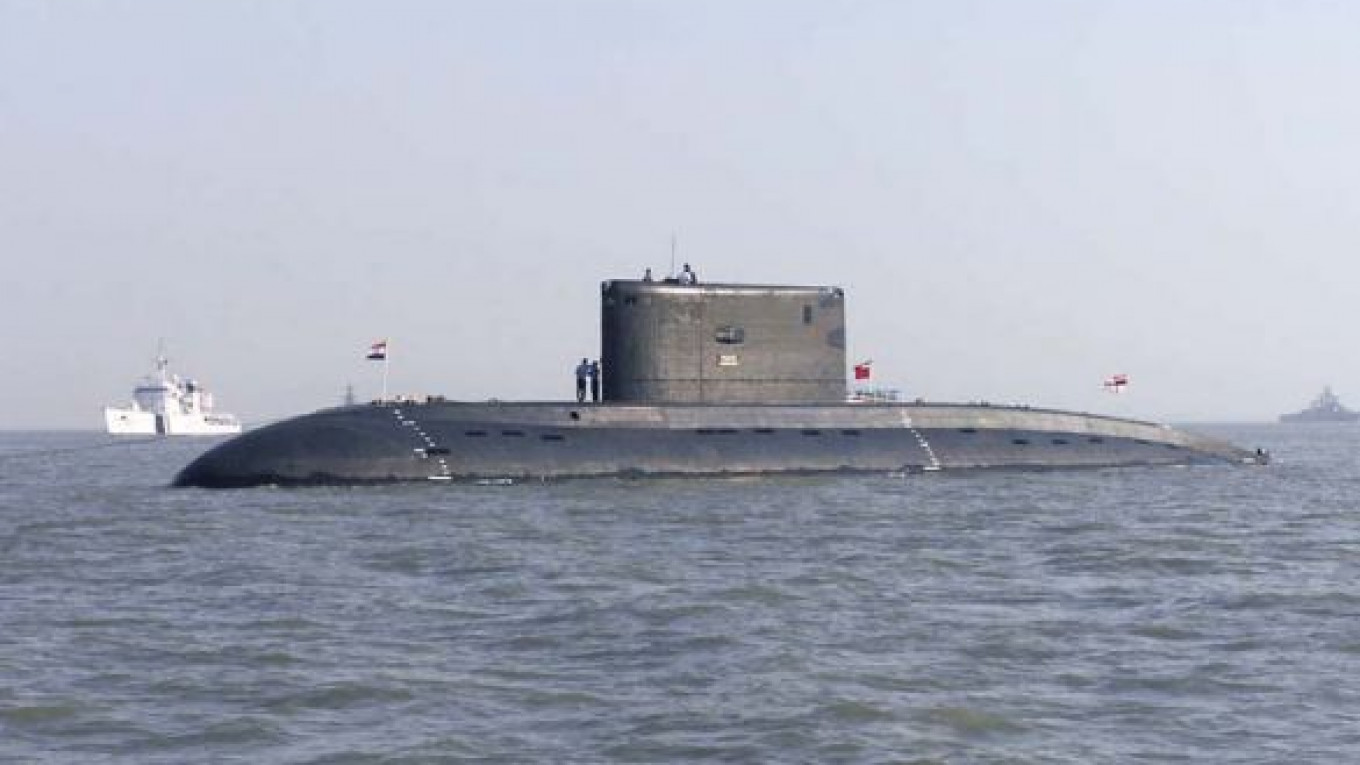An explosion on a Russian-built submarine belonging to the Indian Navy caused the vessel to catch fire and sink in Mumbai port on Wednesday, trapping 18 sailors.
Several sailors managed to jump to safety at the time of the explosion, but a number were unable to get off the vessel and died in the ensuing fire, India's Defense Ministry said.
The exact number of deaths has not yet been disclosed and rescue attempts to free the men are ongoing.
The INS Sindhurakshak, a Project 877 EKM submarine, was returned to India from Russia in January 2013, having undergone large-scale repair work at the Zvyozdochka shipyard in Severodvinsk.
A representative from the shipyard said that the explosion was not connected to the repair work it carried out between 2010 and 2012.
After the refit was completed on Jan. 29, the submarine sailed back to India, arriving in April having covered 10,000 nautical miles. Since then it has been used actively by the Indian Navy and was described as "combat ready" after its last inspection, the representative said.
The explosion on the Sindhurakshak, which was built in St. Petersburg in the 1990s, could have been a terrorist act aimed at ruining India's Independence Day celebrations on Aug. 15, an official in military-diplomatic circles told Interfax.
The exact cause is still unknown, but Russian shipbuilding experts are ready to assist in the investigation if India asks for their help, a specialist said.
Eight Russian specialists from the shipyard were in Mumbai at the time of the explosion, but are reportedly alive and well as the incident happened at night when they were in their hotel.
The Indian Navy currently owns 10 Project 877 EKM submarines.
Update:
The explosion could have been caused by an act of sabotage, a hydrogen leak from the battery tank, a violation of technical rules or a system failure, a news report said Thursday.
The Indian sailors could have been loading the ammunition and charging the vessel's battery at the same time, which is strictly prohibited, a Russian shipbuilding specialist told Interfax.
When loading the ammunition, the whole system is de-energized and hatches between the compartments are battened down — when charging the batteries the hatches must be open to provide ventilation, he said.
The specialist also suggested that hydrogen afterburners in the boat’s nose compartment could not cope with the volume of gas emitted when charging the battery.
A Message from The Moscow Times:
Dear readers,
We are facing unprecedented challenges. Russia's Prosecutor General's Office has designated The Moscow Times as an "undesirable" organization, criminalizing our work and putting our staff at risk of prosecution. This follows our earlier unjust labeling as a "foreign agent."
These actions are direct attempts to silence independent journalism in Russia. The authorities claim our work "discredits the decisions of the Russian leadership." We see things differently: we strive to provide accurate, unbiased reporting on Russia.
We, the journalists of The Moscow Times, refuse to be silenced. But to continue our work, we need your help.
Your support, no matter how small, makes a world of difference. If you can, please support us monthly starting from just $2. It's quick to set up, and every contribution makes a significant impact.
By supporting The Moscow Times, you're defending open, independent journalism in the face of repression. Thank you for standing with us.
Remind me later.


